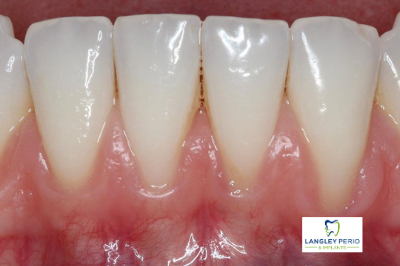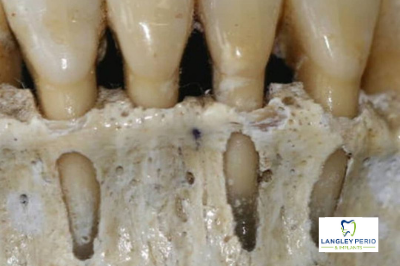Do you know that gum tissue thickness and quality is mostly the result of genetics? When the gum tissue is thin, chances are the underlying bone support protecting the teeth is also thin! See the image to the right of the bony morphology of a thin phenotype patient. You can see some parts of the teeth sticking out of the bone, which makes the gums' attachment weaker.
A thick/flat tissue type normally does not tend to recede as easily. In these types of patients, the shape of their teeth is usually more square.
Thin and scalloped tissues are usually seen with more triangular-shaped teeth and are more prone to undergo gum recession.
Some facts: a higher proportion of Caucasians and African Americans have a square tooth shape, while Asians commonly have a more triangular tooth shape and thinner tissue phenotype.
People with a thin tissue phenotype are more susceptible to receding gums. Recession can happen on any tooth in the mouth, but some areas are more prone to recession depending on the position, the biting forces and brushing habits.


Here are a few signs that may indicate gum recession:
- Sensitivity to cold/ sweets
- A tooth that appears longer
- Exposed roots (usually more yellow or darker than the tooth itself)
- Dark line at the gum line if you do have crowns or veneers
- Black triangle or space between the teeth with no papilla fill
- Loose teeth
Gum recession is a common oral problem and is not something you want to ignore. If you think your gums are receding, make sure you make an appointment with your dentist or periodontist to get it checked. Some treatments can repair the gum defect and prevent further damage. It is much more successful and predictable to treat it early.
Save this post and share it with someone that might need gum grafting.
Call us at (604)227-1869 if you have any questions or would like to schedule an appointment for your periodontal treatment.